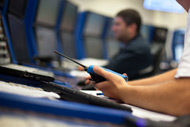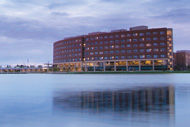
|
| The HVAC ONE system notifies of inadvertent changes in airflow rate. |
Architecture firm HDR Inc., Omaha, Neb., has developed a new energy-saving process that automatically reduces the number of air exchanges in an operating room (OR) when it is not in use.
The patent-pending process, called HVAC ONE, ties together a hospital's surgery scheduling system with the building automation system to lower the OR air exchange rate when it is unoccupied, says Von Lambert, director of technology solutions, HDR Inc. Lambert says HDR developed the interface engine and reporting tool protocol design for the intelligent, rule-based translation and data routing between surgery scheduling and the building automation systems. The process hasn't been installed anywhere yet.
American Society of Heating, Refrigerating and Air-Conditioning Engineers (ASHRAE) code recommends that air exchanges occur at a rate of 20 to 25 per hour during surgery, with four or five of those being outside air. However, during unoccupied periods ASHRAE code allows the air exchange rate to be reduced to 25 percent of the rate during surgery. Reducing the air exchange rate to the accepted level can lead to $5,000 to $10,000 in annual energy savings per OR, Lambert says.
In addition, HVAC ONE monitors and notifies the care providers and facilities staff of any inadvertent change to the airflow rate due to human interaction or mechanical or electrical failure, reducing the potential risk of infection.





